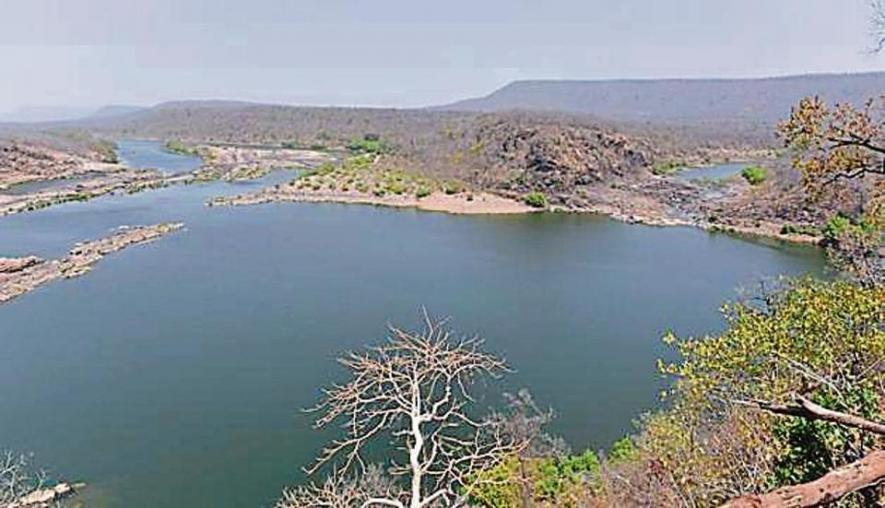SC-Appointed Panel Files Adverse Report on Ken-Betwa Inter-linking Project

Lucknow: The residents of Bundelkhand region, who have been suffering from acute water crisis since the last many decades, may have to wait longer as the much-hyped Ken-Betwa river inter-linking project has been found unfit as per the Wildlife Protection Act.
The Central Empowered Committee (CEC), appointed by the Supreme Court of India, in its report has recommended that the river linking project should not be allowed to proceed since the ecological costs far outweigh its proposed and purported benefits.
The report also mentions that the river linking project does not satisfy the requirements of the provisions of Section 35 (6) of the Wildlife Protection Act 1972. As per this Section, any activity destroying or damaging or diverting the wildlife, including forest produce, is prohibited.
It may be mentioned that the aim of the Ken-Betwa river inter-linking project was to divert water from the Ken river basin to the water-deficit Betwa basin. The amount of water to be diverted through a concrete canal by constructing several barrage and dams was estimated at 1,020 cubic mm with the cost of the project estimated about Rs 18,000 crore.
The report filed by the CEC in the Supreme Court also says that the project involved construction of a dam and a two kilometer-long tunnel inside the core of the Panna Tiger Reserve, which can have a very damaging impact on the vulture habitat as well as the downstream Ken Gharial Wildlife Sanctuary.
The report reportedly also concluded that the project could not be permitted in the light of the “irreversible and irreparable” harm that would be caused to the unique ecosystem of the Panna Tiger Reserve, which is heavily dependent on the Ken river system.
It may be mentioned that as per the latest count, Madhya Pradesh stood tallest in terms of the tiger population in the country, with 526 tigers and around 30 tigers in the Panna Tiger Reserve.
“The forest land involved in submergence is a unique ecosystem of the morphological significance, unique and rich biodiversity in the region and which ecosystem cannot be recreated,” the CEC report reads.
The committee's report was in response to a petition filed by activist and environmentalist, Manoj Mishra, who pleaded that phase one of the river interlinking project should be considered only after scientific study.
Salient Points from the CEC Report:
-
The large block of 6017 ha of forest land involved in diversion to non-forest use is a part of the National Park and core critical tiger habitat of the Panna Tiger Reserve and will result in total loss of wildlife habitat of 10500 ha on account of submergence and fragmentation.
-
The SC NBWL has considered the impact of the project only in terms of the tiger habitat and not taken into account of the entire flora and fauna and the unique ecosystem ignoring the fact that the project is located within the core of the national park.
-
The very objective of declaration of this unique ecosystem with special morphological significance and unique biodiversity as national park to ensure operation of laws of nature including natural evolution unhindered by human intervention will be defeated and will result in complete breakdown of the evolutionary process of millions of years.
-
The alternative to the main objectives of the project proposal of irrigation and alleviation of poverty have not been examined by the project proponents.
-
There is a dispute with regard to sharing of proposed dam water between Uttar Pradesh and Madhya Pradesh, and if the claims of UP is to be accepted then sufficient water will not be available for transfer to Betwa basis for development of the target command conceived in upper Betwa basin.
-
The impact on the downstream Gharial Sanctuary and vulture nesting have not been examined.
-
The disturbance to wildlife during the construction phase will extend beyond the 6071 ha of forest proposed for diversion and will last for more than a decade exerting tremendous biotic pressure on the core of national part and critical tiger habitat.
-
The project involved felling of around 23 lakh trees from the National Park which is no mean loss. The value of all such plants/trees that are ultimately going to be lost have not been considered.
Ashish Sagar, a Banda (UP’s Bundelkhand region) activist and environmentalist says that the report filed by the CEC is correct in its assessment and it should have been presented when the project was conceived in 2003.
“The Ken-Betwa river inter-linking project will turn out to be a bane for our ecology and mankind. There is not enough water in the basin of both the river basin and the base of this project is factually incorrect. Besides, this will also cost us as more than 20 lakh old trees will be axed. The government does not have any roadmap or alternative route for the rehabilitation of the wildlife,” Sagar says, adding if the river linking happens then it will be the most disastrous step.
Get the latest reports & analysis with people's perspective on Protests, movements & deep analytical videos, discussions of the current affairs in your Telegram app. Subscribe to NewsClick's Telegram channel & get Real-Time updates on stories, as they get published on our website.
























